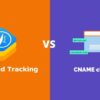Prototype Pollution

What Is Prototype Pollution?Prototype pollution is a vulnerability that enables threat actors to exploit JavaScript runtimes. In a prototype pollution attack, threat actors inject properties into existing JavaScript construct prototypes, attempting to compromise the application.
This vulnerability is called prototype pollution because it allows threat actors to inject values that overwrite or pollute the “prototype” of a base object. This malicious prototype can pass to many other objects that inherit that prototype. Once threat actors can control the default values of the object’s properties, they can tamper with the application’s logic. This can lead to Denial of Service (DoS) or remote code execution (RCE).
How Do Prototype Pollution Vulnerabilities Happen?Prototype pollution was introduced when the European Association of Computer Manufacturers (ECMA) published the ECMAScript2015, 6th Edition specification. This specification created a JavaScript standard that ensures compatibility across various web browsers.
The specification includes standardization of the __proto__ feature, a special attribute that refers to Prototypes of an object. All JavaScript objects now have this attribute, and __proto__ itself is also defined as an object. “Prototype” refers to a mechanism that enables JavaScript objects to inherit features from one to another.
Everything you type in JavaScript (except primitives) is an object. Furthermore, an object Prototype may have other Prototypes nested under it, and can inherit Prototypes from other objects. This is referred to as a prototype chain.
Prototype pollution occurs when an attacker manipulates the __proto__ attribute, usually by adding a new Prototype into it. Because every JavaScript object now has the __proto__ attribute, and every object inherits Prototypes, whenever a Prototype is added, it is inherited by all objects in the prototype chain.
This means a malicious player could inject properties into existing JavaScript code to trigger a JavaScript exception causing denial of service, malicious code that achieves remote code execution, or other severe consequences.
Prototype Pollution Security RisksJavaScript can run on the client-side and server-side of a web application, which is why prototype pollution vulnerabilities may exist on both sides. As a result, prototype attacks can vary greatly in scope and damage, depending on the application logic and implementation. Here are several examples:
- Denial of Service (DoS)—a prototype pollution attack can enable threat actors to perform DoS against a targeted user in a client-side attack or on the web server that hosts the application.
- Interfering with the JavaScript environment—a prototype pollution attack can add or modify a property to cause unexpected behaviors. It can result in some logic not executing as intended.
- A starting point for additional attacks—a prototype pollution attack allows threat actors to leverage other components (Gadgets) loaded in the same context. It enables them to initiate complex attacks and potentially escalate their privileges or gain access to sensitive information.
Client-Side ExploitationA prototype pollution exploitation starts when threat actors inject a payload into an input, like a URL, that builds the client-side logic or application rendering. For example, a URL parser can assign JavaScript objects properties without verifying if the target property is linked correctly to the Object prototype.
Client-side exploitation of a prototype pollution vulnerability can result in several attacks, such as cross-site scripting (XSS) attacks. In this case, threat actors look for a gadget that relies on the property of an object susceptible to pollution. If the object interacts with the page’s document object model (DOM), threat actors can trigger client-side JavaScript code execution.
Server-Side ExploitationServer-side exploitation occurs when threat actors exploit prototype pollution vulnerabilities to modify the Object prototype’s properties using gadgets located in the application context. In this case, the modified JavaScript runtime objects are executed on the server, leading to a more severe impact than client-side attacks.
Exploiting prototype pollution vulnerabilities can be complex. It typically requires a deep analysis of the application logic to determine the attack’s impact. However, server-side exploitation can lead to severe consequences, including remote code execution (RCE), SQL injection (SQLi), and authorization and authentication bypass.
Prevent All Changes to the PrototypeAnother method that JavaScript supports is Object.freeze(). It lets you block all changes to an object’s attributes. Given that a prototype is simply an object, you can freeze it as you would a regular object. You can invoke the Object.freeze(Object.prototype)element to freeze the default prototype and prevent it from being polluted.
You can also install the nopp npm package to automatically freeze all common object prototypes.


